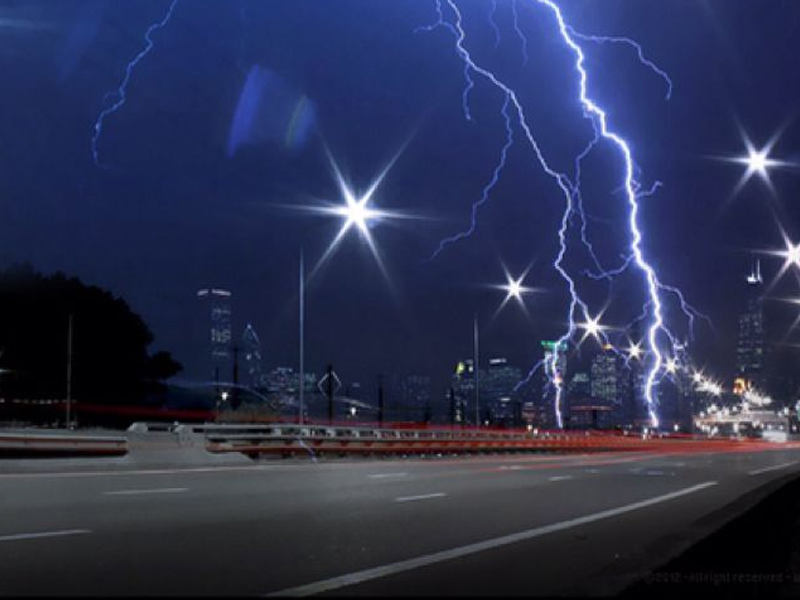Protecting your LED lighting from power surges is essential

To put it simply, an electrical surge is a rapid increase in current through your electrical wiring. Electrical appliances and equipment that are plugged into a circuit during a surge can be severely damaged, even though the event itself may occur for only a fraction of a second. Power surges can damage any LED light, including powerful models like those used in stadiums and floodlights. LED components are vulnerable to surges because of the heat they generate, which can cause them to melt or produce short circuits. An LED light may survive over 50,000 hours, with a few lasting exceeding 100,000, but an electrical surge can destroy its life within a fraction of a second. LED lights have a long lifespan, but you need to take precautions during installation to preserve that longevity. It is why landscape lighting surge protection is in demand in the market.
The essentials of understanding dirty power
Dirty power, often called electrical pollution, is a term for a collection of problems with an electrical signal that reduces its reliability. Since most people aren’t aware of it, dirty electricity has traditionally been a quiet killer of gadgets. Fluorescent fixtures, LED high ceiling lights, and LED wall packs are all susceptible to dirty power, which can cause anomalies like repairs to lights and early failure owing to electromagnetic interference. Filters and regulators are used to smooth out voltage spikes caused by contaminated electricity. It is important to safeguard your LED lights from dirty power by testing them and taking the necessary precautions.
- Turning on large electrical equipment is a common source of electrical surges. This entails starting up vehicles, turning on air conditioners and freezers, and so forth.
- Lightning, among the most unexpected and deadly drivers of power surges, may instantaneously damage mobile phones (particularly those charging) and commercial LED products including LED sports field lighting.
- Blackouts. Intense power fluctuations have been seen preceding power outages, which can have a devastating effect on electronics and illumination in a matter of seconds.
- The outlets are already at capacity. This is the case whenever an electrical socket is overloaded by the simultaneous use of many appliances or gadgets.
- Power surges can be caused by damaged wires and circuits, especially if the wiring or circuit makes touch with an external element that is not compatible with it.
Defending Yourself From Power Surges: 5 Easy Steps
Surge protection from electricity is not as complicated as it may appear. Follow these five easy measures to ensure your LED lights are as safe as possible.
- To begin, you should call in the professionals; they will be able to do tests to see whether your electricity is unclean and will know how to best safeguard your electronics against spikes. Seek the advice of a licensed electrician to ensure your safety.
- Surge protectors should be installed on all of your home’s electrical outlets. You may safeguard your LED lights from power surges in two different ways: with an in-line surge protector or a surge protector with a photocell receptacle. Many different kinds of LED lighting, such as floodlights, corn bulb lights, LED canopies, and so on, are compatible with in-line surge protectors. They have a wide variety of applications due to their simplicity of installation in the circuit before the LED light. Protective surge strips for photocell sockets, made specifically for use with LED tiny box lights, lock into place with a simple twist. With a simple twist, the surge protector fits snugly into the photocell’s receptacle, and the photocell is secured atop the protector. When the surge protector eventually has to be replaced, its design also makes it simple to do so. Both of these solutions are great for shielding your LED lights without breaking the bank.
- Third, avoid the usual error of overloading your circuits. Take care to only use outlets that can handle the electrical load of your gadgets and appliances at all times. It’s important to not overload a circuit by plugging in too many gadgets at once. If a circuit becomes overloaded, the breaker will shut off the electricity, but the surge that causes the breaker to trip may have already fried your LED bulbs.
- Fourth, pick the correct surge protectors; some of them aren’t made for certain kinds of bulbs or electronics. If you’re using a power socket for your LED headlights, it may not be compatible with your AC or fridge, and vice versa. There are surge protectors that also act as regulators or filters to clean up contaminated electricity.
- Replace surge suppressors routinely — They wear out. Surge protectors should be replaced at least once every two years. Be prepared to update your safeguards, especially after an anticipated major spike. Surge protectors can be worn down by frequent, tiny surges, leaving your LED car park lights vulnerable when you need them protected.

